Remote F&A teams embrace automation of account certification at year-end close
A special ReconArt feature first published on Bobsguide – the ultimate fintech resource, an innovative online platform that connects the providers of fintech solutions with the financial services professionals who need them.
Read the article here as well.
It’s the most wonderful time of the year!
Well, except for the accounting community struggling with the year-end close.
Most of the stress and frustration around closing the books is generated by unfit tools and the organization of the process. Managing period-end close in accounting has several distinct challenges every F&A professional can confirm.
Verification and adjustment of account balances on cash and accrual basis is the primary objective. Certification of the balance sheet accounts plays a distinctive role in statutory regulatory reporting but is also a good practice from audit and compliance perspective. It is an opportunity to assess the overall financial health of the company and flag situations that bring operational risk. The negative implications of closing the books chaotically vary from penalties from regulatory bodies and tax authorities, to negative impact on the bottomline and loss of credibility in front of partners.
Usually the process is carried out in close collaboration and coordination of multiple operational entities within the enterprise plus input from third parties. Account certification implies a hierarchy of approval levels under the segregation of duties principle. Depending on the size, the business specifics and the internal policies applied, an enterprise business may have 500 to 2500 accounts on average to reconcile at period end. Certain segments such as banking perform comparison of tens of thousands of GL account combinations. That staggering number is unmanageable without end-to-end automation and smart workflow management.
The period-end close process enters the digital transformation agenda as soon as the absence of structured workflow and proper documentation compromises the reliability of the reported financial results. Data input quality and timely update is questionable as it scattered across various repositories in systems that may not interact. The close requires capabilities to aggregate data which when performed in spreadsheets rarely goes by without human errors and omissions.
Period-end close is a time sensitive process that requires rigorous progress tracking at all levels. However, preoccupation with deadlines sometimes sidetracks precision and analysis of the account history. Besides account balances verification and consolidation, accounting specialists need to spare time for in depth analysis of account balance fluctuations across periods, tracking high risk items aging, and proper documentation. All-encompassing visibility requires flexible and fully configurable automation capabilities.
F&A teams have drifted apart during the COVID-19 pandemic. Home office put a strain on team communication and the routine flow of operations. Departments accustomed to face-to-face meetings and generic tools such as Excel suffer from disruptions and delays in the most critical moment of the fiscal year when full mobilization is expected. Year-end close would be particularly demanding for multi-division organizations with extensive chart of accounts and long approval chains. Those would be the first ones to grapple with a primitive and rigid approach.
Many of those pain points can be addressed and mitigated effectively in an automated environment leveraging the SaaS technology with simple browser access for end users. Running the year end remotely with spreadsheets, emails, and signed printouts must be abandoned in favor of a more streamlined and formalized process. ReconArt as a leading vendor in the reconciliation space has applied best practices in its Balance Sheet Account Certification & Task Management solution.
The client chart of accounts is mapped within the platform structured in folders. The fully configurable certification template assigned to each account determines the certification procedure and schedule to be followed automatically. Accounts are classified, filtered and managed in groups with common properties and treatment, especially useful when the chart of accounts comprises hundreds of line item – for example as Bank Rec Matching, GL Cash, standard Balance Sheet, Income Statement, Nostro, Suspense, Clearing, etc. Depending on their risk degree they can be flagged as high risk/priority accounts for austere scrutiny.
Hands-off extraction of trial balances from the GL can be pushed through a preconfigured approval workflow where each account follow the prescribed certification protocol. The balances are then justified through the value of the transactions (or sub ledger items) forming that account balance – can be zero, debit, credit or not specified. The difference between imported balance and explained balance is automatically calculated and highlighted so the preparer can take action to examine / explain that difference. System certification can be applied for accounts based on certain business rules (e.g. low risk, from specific categories, zero or unchanged balance status). This optimization reduces the workload while remaining fully audit-proof.
Account certification is a multi-level approval workflow process shaped by the company’s policy. Best practices suggest a minimum of two levels are configured for the monthly certification but three levels can be required for the quarter-end or year-end certifications. The roles within that workflow are fully configurable in line with the internal chain of responsibilities – primary and backup, first and second line, Preparer, Reviewer, Approver, Manager, Auditor. The range of user access rights is determined by the respective role thus enforcing the separation of duties principle.
Each account can be drilled down to make evident the connection between the underlying transactions and the account balance. For companies who implemented daily reconciliation on transactional level for certification eligible accounts, outstanding items are retrieved automatically to ensure full traceability of exceptions. Also, any user initiated changes in the account balances are captured in the audit trail together with the supporting documentation. The system puts auto check points such as mandatory attachments to substantiate the certification. The events in the audit trail can be filtered by account, time, user, or type of operation. The contents of the audit trail can be exported out of the system and analyzed for efficiency gaps.
As the period-end campaign progresses, updated trial balances come in daily or even more frequently, so this stream of data cannot be navigated blindfold. Automated data import scheduled to refresh with near real time frequency guarantees quick reaction to incoming updates. Accounting can kick off certification from day 1 following the cut-off date. New trial balances imported in the system overwrite the old data and resets the approval cycle upon detected movement in the account while unchanged balances remain unaffected and up for advance in the approval chain. The automated workflow can shave off days only through eliminated clutter and redundancy, reduced reaction time, improved visibility and system sync.
The configured calendars plus the events triggered by the users generate reminders for next steps in the workflow. Whenever a user input / action / awareness is required, notifications to address lags and bottlenecks are delivered. Active progress tracking can be performed via the customizable dashboards with high level information at a glance – count of outstanding accounts, account status, breakdown by account and user, total dollar value remaining to certify charted across days, etc. Apart from process steps, user designated tasks can be also be managed in the same integrated environment, adding another level of control on individual task completion.
ReconArt incorporates the operational and analytical side of the account certification process – approval workflows and task manager, comprehensive reporting and variance analysis of the deviations from projected values. A particularly useful functionality is monitoring the aging of unreconciled items from origination to resolution date – calculated relative to user selected points in the item lifecycle to make sure it does note overstep the configurable aging tolerance threshold and pile up in the backlog unattended to.
Avoiding the proverbial accounting frenzy at the year-end countdown is not a question of luck or endurance but embracing the right problem solving technology.

 follow our blog
follow our blog


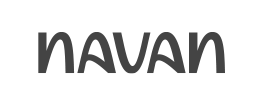
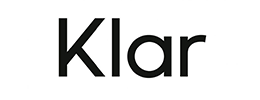



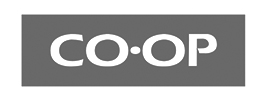

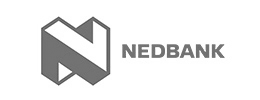


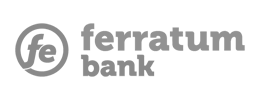









 Quick response
Quick response

